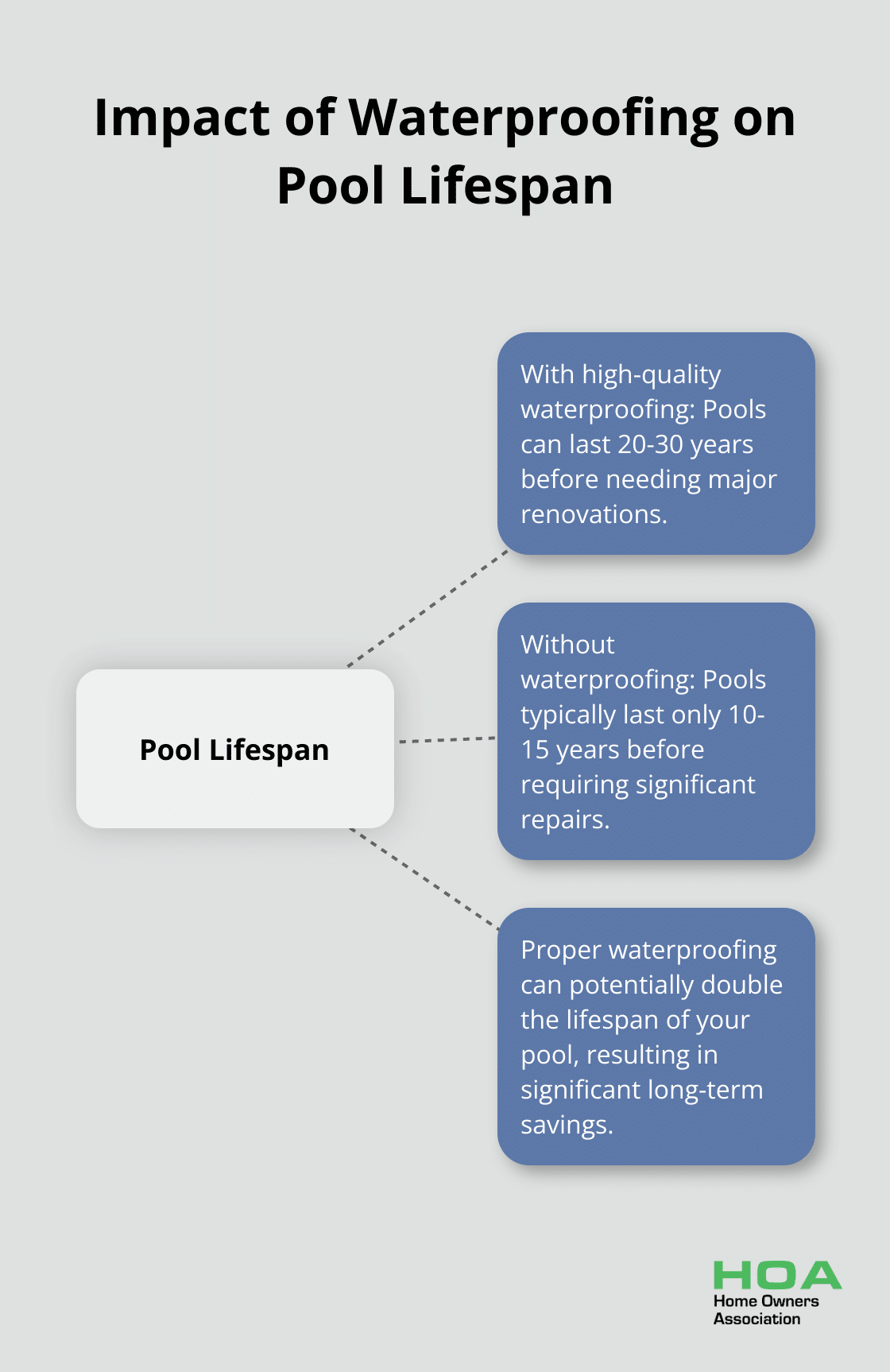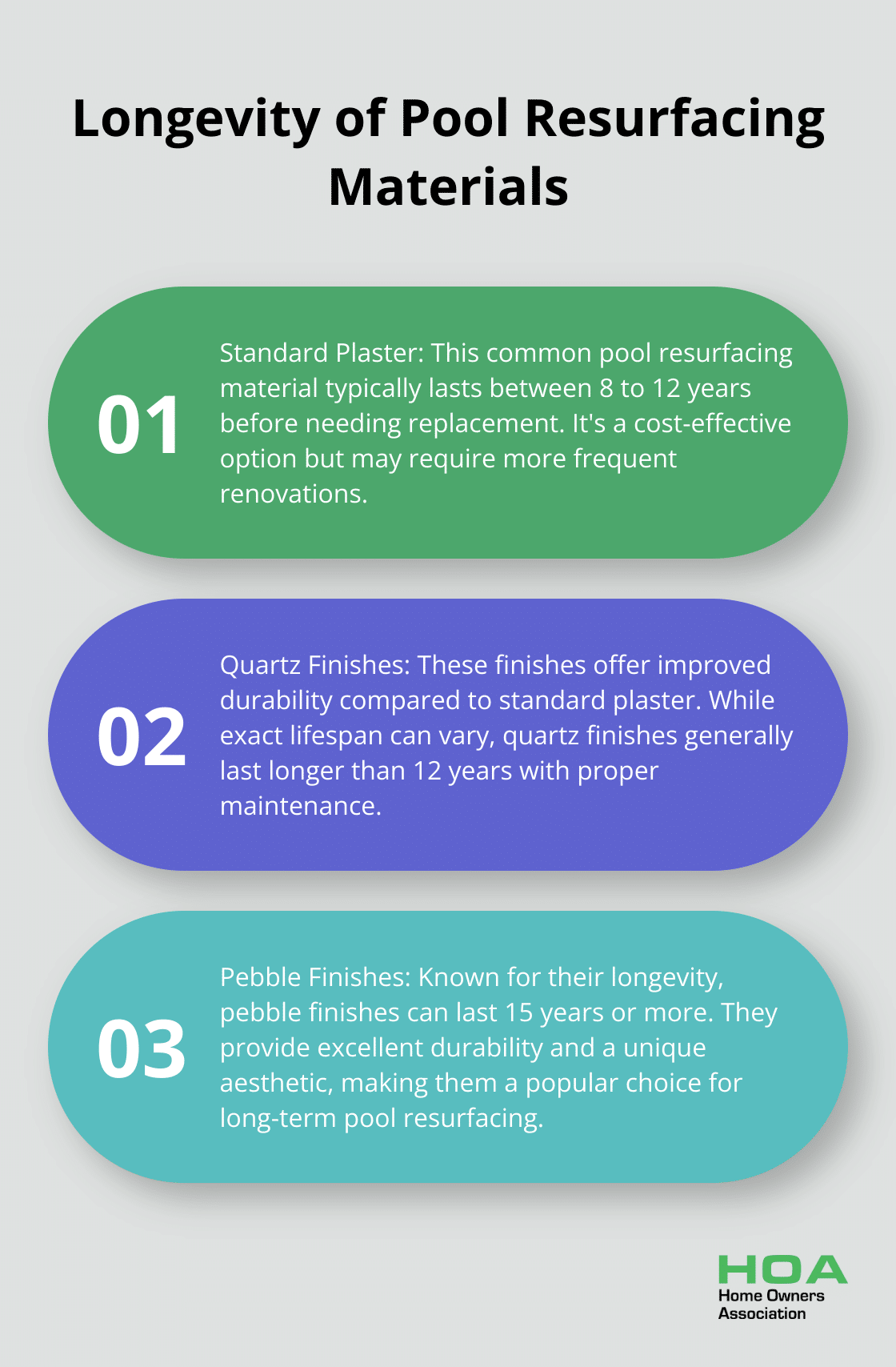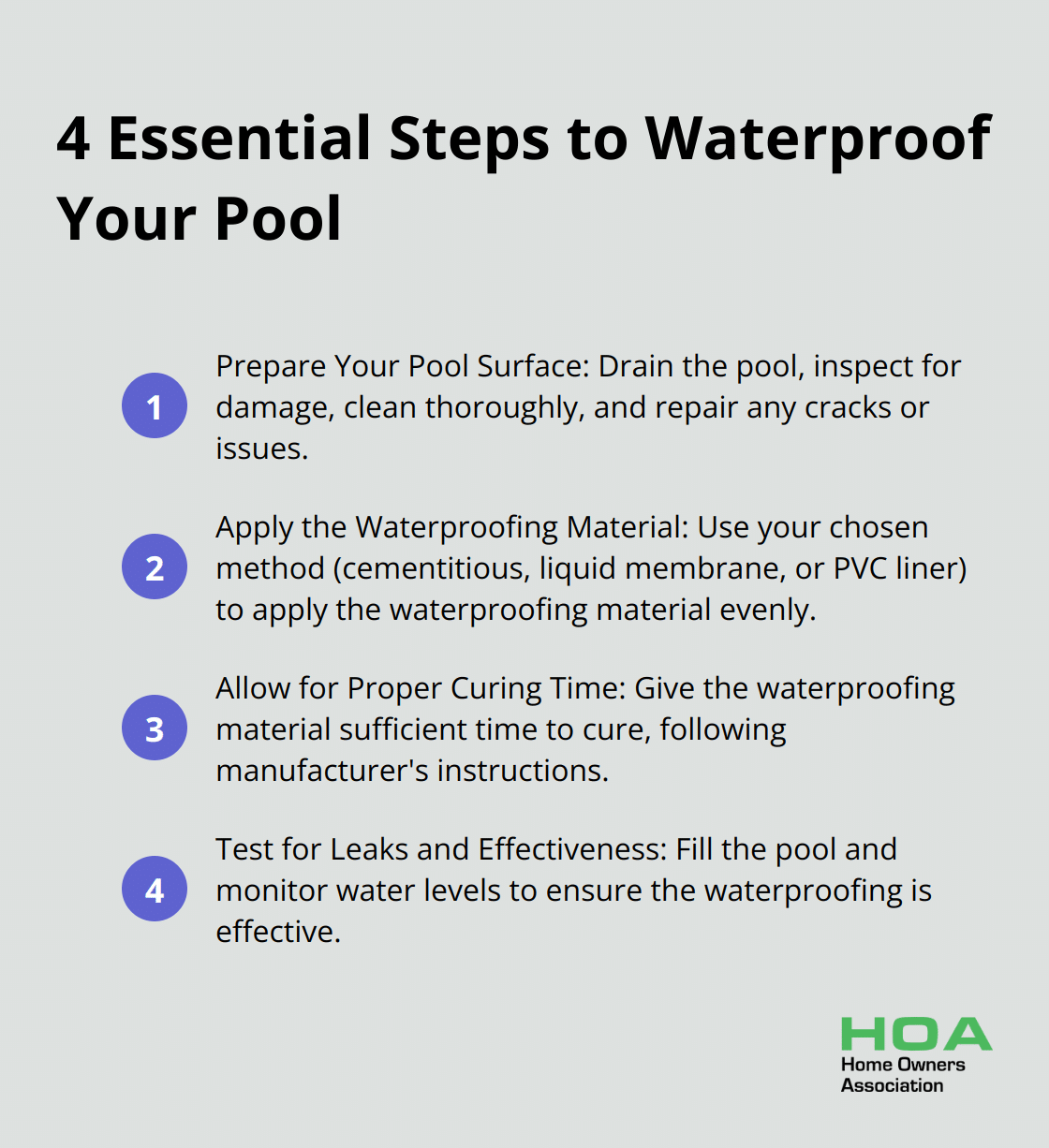
At Home Owners Association, we understand the importance of maintaining a pristine swimming pool for our community members.
Waterproofing your swimming pool is a critical step in preserving its structural integrity and ensuring a safe, enjoyable experience for all users.
This guide will walk you through effective methods and practical steps to waterproof your pool, helping you protect your investment and extend its lifespan.
Why Pool Waterproofing Matters
Protecting Your Investment
Pool waterproofing acts as a fortress against water damage. Without adequate protection, water can seep through tiny cracks and pores in the pool structure, which leads to costly issues.
Ensuring Water Quality
Waterproofing doesn’t just keep water in-it keeps contaminants out. A properly sealed pool surface prevents the growth of algae and bacteria (which thrive in moist environments). This results in less time and money spent on chemical treatments and cleaning.
Extending Pool Lifespan
The longevity of your pool directly ties to its waterproofing. Pools with high-quality waterproofing can last 20-30 years before they need major renovations, compared to just 10-15 years for those without. This extended lifespan translates to significant savings over time.

Reducing Water Loss
In Australia’s often drought-prone climate, water conservation is essential. A properly waterproofed pool can reduce water loss. This not only saves on water bills but also aligns with environmental responsibility.
Cost-Effective Maintenance
Quality waterproofing protects your property value and reduces ongoing costs. Prevention proves more cost-effective than cure when it comes to pool maintenance. The initial investment in proper waterproofing pays off in the long run through reduced repair and maintenance expenses.
As we move forward, let’s explore the various waterproofing methods available to pool owners. Understanding these options will help you make an informed decision about the best approach for your specific pool needs.
Which Waterproofing Method Is Best for Your Pool?
Selecting the right waterproofing method for your swimming pool is essential for its longevity and performance. Let’s explore the most effective options to help you make an informed decision.
Cementitious Waterproofing: The Reliable Classic
Cementitious waterproofing remains a top choice for decades. This method applies a mixture of cement, sand, and water-resistant additives to the pool surface. It works particularly well for concrete pools and offers excellent resistance to hydrostatic pressure.
Pool resurfacing typically lasts 8-15 years, depending on the material. Standard plaster may need replacing in 8-12 years, while Quartz and Pebble finishes can last longer. However, thorough surface preparation and even application are critical for optimal results.
Liquid Membrane: Flexibility Meets Durability
Liquid membrane waterproofing has surged in popularity due to its versatility and ease of application. This method applies a liquid coating that cures to form a seamless, flexible membrane.
This method excels for pools with complex shapes or in areas prone to ground movement.
PVC Liners: Quick and Cost-Effective
PVC liners offer a swift and relatively inexpensive waterproofing solution. They work especially well for above-ground pools or for renovating older in-ground pools. While not as long-lasting as other methods, PVC liners can provide effective waterproofing for 5-10 years with proper maintenance.

It’s important to note that while PVC liners cost less upfront, they may require more frequent replacement than other methods. Consider the long-term costs when making your decision.
Polyurethane Waterproofing: High-Tech Protection
Polyurethane waterproofing is a high-performance option that’s gaining traction in the Australian market. This method creates a highly elastic, seamless membrane that can bridge cracks and withstand pool chemicals effectively.
While it typically costs more upfront, the long-term benefits often justify the investment.
The choice of waterproofing method depends on various factors (including your pool type, budget, and local climate conditions). Consulting with a professional to assess your specific needs will ensure the best possible outcome for your pool waterproofing project.
Now that we’ve covered the different waterproofing methods, let’s move on to the practical steps of waterproofing your pool. The next section will provide a detailed guide on how to prepare your pool surface and apply your chosen waterproofing material effectively.
How to Waterproof Your Pool Step by Step
Prepare Your Pool Surface
Start by draining your pool completely. Inspect the entire surface for cracks, chips, or areas of deterioration. Use a high-pressure washer to clean the surface and remove any dirt, algae, or loose material. For stubborn stains or mineral deposits, use a pool surface cleaner recommended by professionals.
After cleaning, repair any cracks or damage. Use hydraulic cement designed for pool repairs on small cracks. Larger cracks or structural issues may require professional attention. Once repairs are complete, allow the surface to dry completely (this typically takes 24-48 hours, depending on weather conditions).
Apply the Waterproofing Material
The application process varies depending on the waterproofing method you’ve chosen:
For cementitious waterproofing:
- Smooth the substrate
- Clean the substrate
- Apply the waterproofing membrane
- Test for leaks
For liquid membrane waterproofing:
- Use a roller or sprayer to apply an even coat across the entire surface.
- Pay extra attention to corners, edges, and around fittings.
- Apply a second coat after 4-6 hours of drying time.
For PVC liner installation:
- Ensure the pool surface is smooth and free of sharp edges.
- Place the liner carefully, starting from one end of the pool.
- Work your way across, using a vacuum to remove air pockets and ensure a tight fit.
Allow for Proper Curing Time
Curing is essential for effective waterproofing. Cementitious waterproofing typically requires 5-7 days of curing time. During this period, keep the surface damp by misting it with water several times a day. This “moist curing” process ensures the cement hydrates properly, increasing its strength and durability.
Once the membrane is properly cured, test to make sure the pool is watertight before beginning the tile installation. To do so, fill the pool at a slow rate.
Liquid membranes usually cure faster (often within 24-48 hours). However, it’s important to follow the manufacturer’s instructions, as curing times can vary based on humidity and temperature.
Test for Leaks and Effectiveness
Once the waterproofing has fully cured, test its effectiveness:
- Fill the pool slowly, checking for any signs of leakage.
- Mark the water level and check it after 24 hours.
- If the level has dropped more than 1/4 inch (accounting for evaporation), you may have a leak.
For a more thorough test, add a few drops of food colouring near suspected problem areas. If the colour starts to move or dissipate quickly, it could indicate a leak in that area.
Waterproofing is a complex process, and while DIY is possible, professional application often yields the best results. Pools waterproofed by professionals tend to have fewer issues and longer lifespans. If you’re unsure about any step in the process, consult with a pool waterproofing expert (such as those at Home Owners Association).

Final Thoughts
Waterproofing your swimming pool protects against structural damage, reduces water loss, and maintains optimal water quality. This proactive approach extends the pool’s lifespan and minimises maintenance costs over time. Professional assistance often yields superior results, as experts bring specialised knowledge and access to high-quality materials.
At Home Owners Association, we provide guidance to help Melbourne homeowners make informed decisions about their pool waterproofing projects. Regular inspections are essential to maintain the effectiveness of your waterproofed pool. You should check for signs of wear or damage, particularly around fittings and edges.
A well-maintained, waterproofed swimming pool enhances your property value and provides a safe environment for years to come. You ensure that your pool remains a source of relaxation and entertainment for your family (when you prioritise waterproofing and follow proper maintenance practices). Addressing any issues promptly will prevent minor problems from escalating into major repairs.





